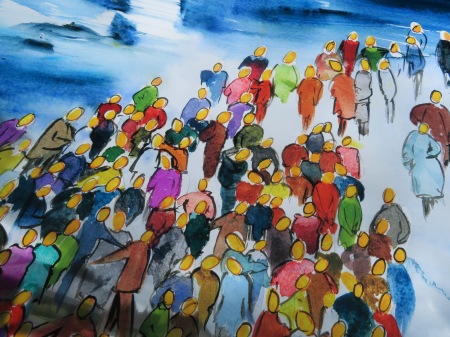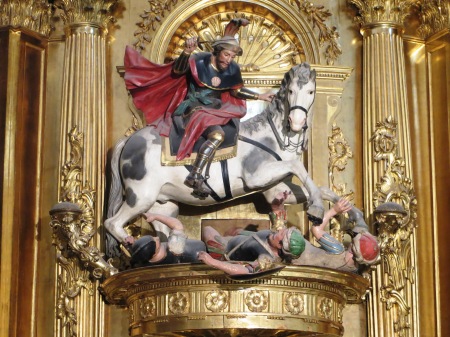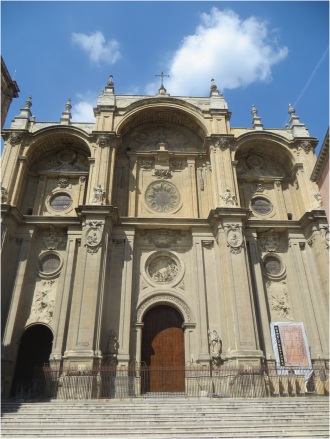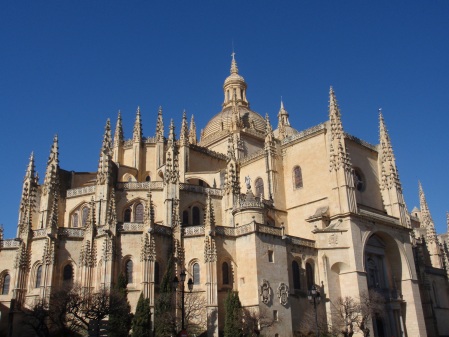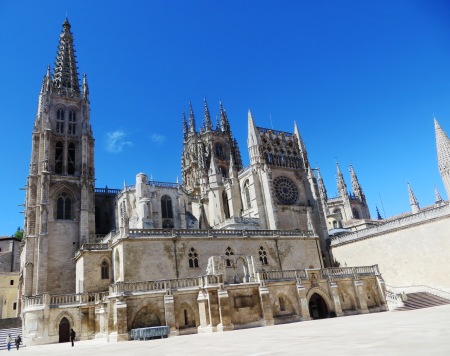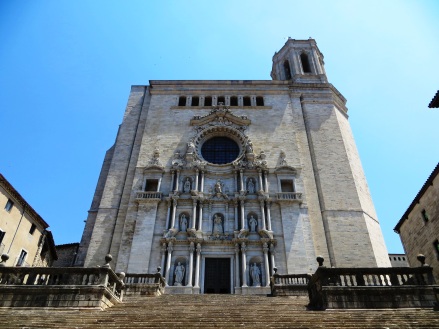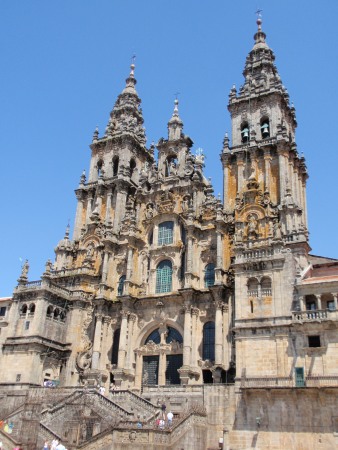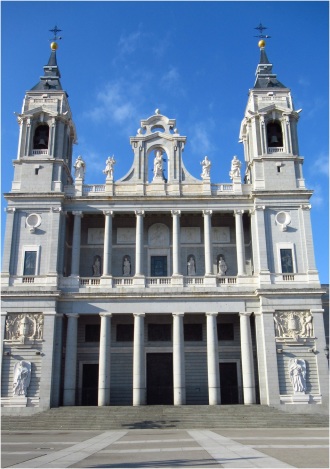There was a steep path to be negotiated to get to the Convento and by midday it was really quite hot so it became quite uncomfortable just to get to the top of the hill. Luckily it plateaued out by the time we got to the entrance and paid our €6 entrance fee and went inside.
This was becoming a perfect day and thanks to the distraction of the Festival we arrived later at the Convento than we had planned and this turned out to be a good thing because a lot of the coach tour parties were now gathering up their passengers and beginning to leave. On the down side we just missed free entrance because we were a few minutes past one o’clock because before that it is free on a Sunday.
Tomar is one of the most historically important cities in all of Portugal with a history that stretches back to the Romans and probably even before that. Fast forward a thousand years and after the capture of the region from the Moors in the Portuguese Reconquista, the land was granted in 1159 to the Order of the Knights Templar. In 1160, the Grand Master in Portugal, Gualdim Pais, laid the first stone of the Castle and Monastery that would become the headquarters of the Order in Portugal and from here they pledged to defend Portugal from any subsequent Moorish attacks and raids
The history is important so please bear with me here. In 1314, under pressure from Pope Clement V, who wanted the Templars banned throughout Europe, the King of Portugal negotiated to transfer the possessions and personnel of the Order in Portugal to a newly created Order of Christ. In the 15th century by a compromise agreement the position of (cleric) Grand Master of the Order was nominated by the Pope, and the (lay) Master or Governor by the King.
Henry the Navigator (one of the most important people in Portuguese history) was made the Governor and he used the resources and knowledge of the Order to succeed in his enterprises in Africa and in the Atlantic. The cross of the Order of Christ was painted in the sails of the ships that crossed the seas and the Catholic missions in the new lands were under the authority of the Tomar clerics until 1514.
The Convento was a wonderful place to visit, so much better than the Palace at Sintra and at only two-thirds the price so much better value. We spotted a coach tour party arriving so we started with the visit before we were overrun with tourist invaders.
And what a tour it was, through courtyards and grand rooms, all empty of course and I prefer it that way to places that are stuffed full of furniture and decorations. Personally I prefer to see a place stripped bare rather than full of old tat.
Through corridors and chapels, great halls and kitchens, dormitories and medieval offices it was all completely wonderful, I could easily have gone through the place for a second time but I knew Kim wouldn’t like that so we left the Convento and made our way to the castle and climbed the walls and made a circuit of the complete site before returning to ground level and after a surprising three hours leaving again and making our way back down to the main square stopping on the way in a café for a drink.
Here I reflected on the visit and I realise that it is easy to get carried away by the moment but I compared it to a visit to the Alhambra Palace in Granada a year ago and I concluded that this place was better. If someone told me that I could visit only one of them ever again then I would choose the Convento de Cristo.
Eventually we arrived back in Praça da República and stopped for another beer. We liked it, the weather was perfect and we were seamlessly adjusted to life outside of Lisbon, it had been a very good few days. When we first arrived I worried about filling three days in Tomar but right now it really wouldn’t have bothered me if the trains went on strike and I had to stop for a fourth.
If you are planning a visit to central Portugal then you simply must stop over in Tomar.
As it happened I was becoming an expert now and I was confident in giving directions to Caminho Way walkers and giving restaurant recommendations to new guests at the Conde de Ferreira Palace. It was rather a shame to be leaving but eventually we left the square while Kim went back to the hotel I walked to the railway station to buy tickets for the next leg of our journey, this time to Coimbra.
Our preferred restaurant was closed tonight so we walked the small town looking for an alternative and eventually settled upon another local sort of place which was nowhere near as good but we enjoyed a good meal at a reasonable price before one last walk through Tomar and back to the hotel for suitcase packing.







